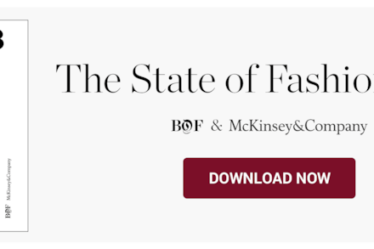
The process of applying for an internship is similar to any entry-level role application — the recruitment process generally requires a candidate to produce a written application, from resumes or CVs and a cover letter or short written application, to creative portfolios, interviews and thorough research on the company.
To help guide junior talent in their application process for a fashion internship, BoF Careers accumulates advice from career coaches, industry experts and recent interns to assist in your entry-level role application today.
Do Your Homework
Before making contact with a company or sending in an application, it is essential you do your research on the business, from its history and core values, to its target consumers, key messaging and leadership.
“These people are looking for [applicants] that are invested in their company,” says Cambridge Dantzler, former digital merchandising intern at Louis Vuitton and Howard University student. “They need to know that you understand what it is they expect, what they pride themselves on; they want to know you’re serious, not just about an internship, but an internship at their company.”
Researching companies can help you understand what you value in an organisation. Deloitte’s Welcome to Gen-Z report found 77 percent of respondents stated it’s important they work at organisations whose values align with their own. You can then refer back to these values in your application.
“When I was doing my research on Louis Vuitton, I saw that they had a commitment not just to sustainability, but to diversity, equity and inclusion,” adds Dantzler. “Doing my research not just prepared me, but it drove me to do even better.”
Companies need to know you understand what it is they expect; what they pride themselves on.
The amount of resources online can be overwhelming, from company websites or employer branding pages to articles or interviews if the business and its leaders are high profile. As a result, manage your research time carefully.
“You can become consumed, spending 12 hours a day, seven days a week, trying to do this, and you’re going to make yourself ill and resent this industry,” says Joy Campbell, brand partnerships director at Graduate Fashion Foundation. “Treat it like a nine-to-five: break for lunch, make sure you’ve got a clear, concise plan of what you’re doing with your day.”
Alongside understanding the business at hand, keep up-to-speed with the area of the industry you want to work in. A comprehensive understanding of your field will impress at interview.
“Being well-versed in your segment of the industry, culture and contemporary fashion is extremely valuable and can empower your critical eye and emerging voice,” says Kirstin Newell, a student at Drexel University and social media intern at a Chicago-based retail platform.
Your research should also entail understanding whether an internship is paid or not. Unpaid internships are rife, both within and outside the fashion industry, as well as globally. According to a NACE survey of over 5,000 interns in 2020, nearly 40 percent said they were not paid.
If a salary is unclear, reach out to the HR team to enquire about compensation before you send in an application — and receive in writing any financial commitments made. Wherever possible, you should not compromise on pay.
If you do accept an unpaid position, understanding your legal rights is essential. For instance, UK law forbids unpaid internships lasting longer than a month — or if an intern is performing a job that cannot be performed by someone else in the business. In the US, unpaid internships can be longer but the U.S. Department of Labor stipulates they must be “limited to the period in which the internship provides the intern with beneficial learning,” among other legal requirements.
Write a Concise, Structured Application
Your CV or resume should be a snapshot, not an in-depth narrative, of your academic and work history, as well as any extracurricular activities or abilities that make you stand out.
“For CVs, my biggest thing is concise [and] bulleted. I would not want to see more than one page for an entry-level role. And just [include] the most relevant experience. I don’t need you to waste space for your picture. If you’re going to have a personal statement, make it clear about who you are, because I will scan that and think, ‘where can I place you?’ I don’t need to know that you are family-oriented or enthusiastic,” says Campbell.
When applying for a role in a creative industry, it can be tempting to demonstrate your creative flare on a CV — but save that for your portfolio or cover letter.
“If they are too creative, [they] will not [be] understood. [Recruiters] will receive thousands of CVs and you need to catch the main information,” says Eugenia Mirri, fashion careers coach at Istituto Marangoni and former talent acquisition specialist at Gucci. “If [you] have work experience, [that] information [should be] at the top, from the most recent to the oldest; the same with education.”
While a time-consuming process, your CV or resume should be tailored to meet the requirements of every job you are applying for. This could prove essential for recruiters to see the application in the first place. Often, organisations that receive a large number of applications will use software that scans for specific words that match the job description, so including those keywords can help mitigate the risk of losing out.
You should print out the job spec, highlight keywords within it, and make sure you are reflecting them within each of your communications.
“Your portfolio, CV and cover letter should change for every job you go for. It should never be the same — and if it is, that’s where you’re going wrong,” says Campbell. “You should print out the job spec, highlight keywords within it, and make sure you are reflecting them within each of your communications.”
Your cover letter is then where you can expand upon your abilities and craft a narrative around yourself. Cover letters should be concise — and not a carbon copy of the information on your CV.
Pinpoint a few key skills and values you possess that align with those of the role and organisation — and make the connection clear. Wherever possible, address the letter to the recruiter or hiring manager, and make reference to the company throughout, to show you have researched the business and care about your applications’ readership.
“The portfolio is so important because ultimately, it’s going to show every skill and it will get you the job,” Hywel Davies, programme director of fashion at Central Saint Martins, previously told BoF.
Indeed, for fashion designers, your portfolio should offer insight into your designs, creative vision and skill sets, from sketches to samples to shoots. Grounding your portfolio in the cultural zeitgeist also suggests commercial know-how and an understanding of wider contexts — and it is important to show your process and development.
“Most of the time, you will find inside a portfolio the final [creations]. For the designer and manager that will hire for the internship, they want to understand what is behind the collection, how you found these materials, how you [created] this embroidery,” says Mirri.
Portfolios are not reserved for designers: whether a writer, illustrator, stylist or visual merchandiser, creating a physical or digital home for your work will make it easier to share with prospective employers or collaborators. For instance, writers can use Clippings to collate work published online, which means just one URL to share in an application.
Where possible, your portfolio should be tailored to the work you are applying for — to ensure you are speaking directly to the criteria of the role or company.
“Your portfolio, CV and letter should be cohesive. I don’t want to see on the CV that you’re a menswear designer with [an interest in] sustainability, but then you’ve got this portfolio that has just womenswear and utilises synthetic materials,” says Campbell.
Consider Your Cross-Platform Personal Branding
“You’re going into an industry where creativity, process and branding are important. So make sure you understand that and reflect that in what you’re doing,” Campbell continues. “You have to make sure that every single touch point tells the same story about you. That includes Instagram.”
Your online profiles, like Instagram or TikTok, can provide recruiters with insight into your creative aesthetic, personal branding but also personal life — so craft your online presence with care.
“[Accounts] need to be current with their aesthetic if they are a designer. They need to focus on their collection and we suggest to [build it up] slowly,” adds Mirri. “[Otherwise,] we suggest making [your account] private.”
The hiring manager and the line manager want to understand if this person can grow. Show empathy, flexibility; be humble.
You can also treat LinkedIn like a portfolio — while a visually less engaging social media space, it is rife with recruiters and professionals who can instantaneously access everything they might need to know about you, so be active and professional on the platform.
“One girl who wanted to go into PR at Boohoo created this beautiful PR pack, took a picture of it and tagged them [on LinkedIn]. It had thousands of likes and the Boohoo team [invited her] for an interview,” says Campbell. “You have to market yourself.”
Demonstrate Soft Skills at Interview
Indeed, part of the application process will inevitably involve at least one interview. For some, such as Dantzler, it took three interviews with various individuals at Louis Vuitton who could pinpoint where he would best thrive in the business.
“See the interviews as a conversation,” Dantzler recommends. “Knowing that just [makes it] more approachable, because interviewing at Vuitton, on a corporate level, is scary, especially if you’ve never worked in a fashion internship. My first step was making sure I was confident in my skills, and that I knew what I could bring to the table.”
If it is your first internship, recruiters should understand that you won’t have all the essential skills yet. So, when preparing for your interview, focus on demonstrating your soft skills, including a positive attitude and aptitude for learning.
“The hiring manager and the line manager want to understand if this person can grow,” says Mirri. “Show empathy, flexibility; be humble.”
Under the pressure of an interview, it is easy to forget your talking points and lose your confidence. But generally speaking, recruiters will only interview you if they believe your application is strong enough to work at their company — the interview is to help them understand if they can enable your growth, and if so, where.
“Keep a list of all your accomplishments that you’ve done within organisations and internships, research, even in classes. It can be very confidence-boosting,” says Newell.
Also consider what skills you can provide outside of the expected academic transcripts or passion for a role. As the next generation of talent — and a representative of the next generation of consumer — you can offer insights into the demographic brands are trying to reach and therefore represent in their workforce.
Next week, we examine how to impress in your internship — and make the most of it — from office and email etiquette to advice on networking and connecting with colleagues.



